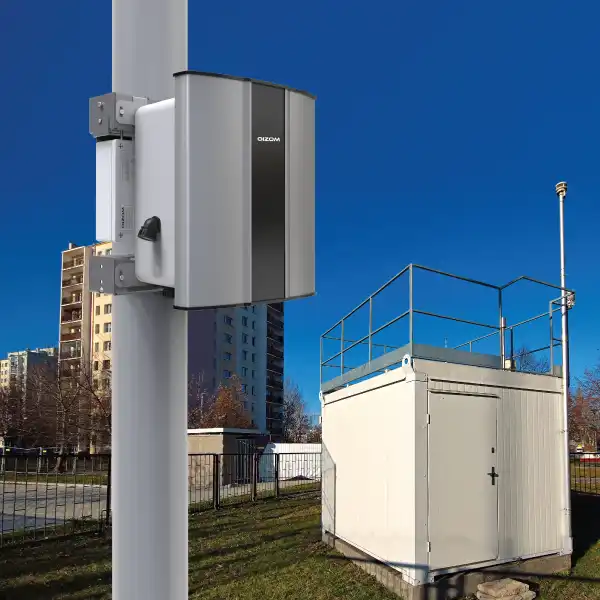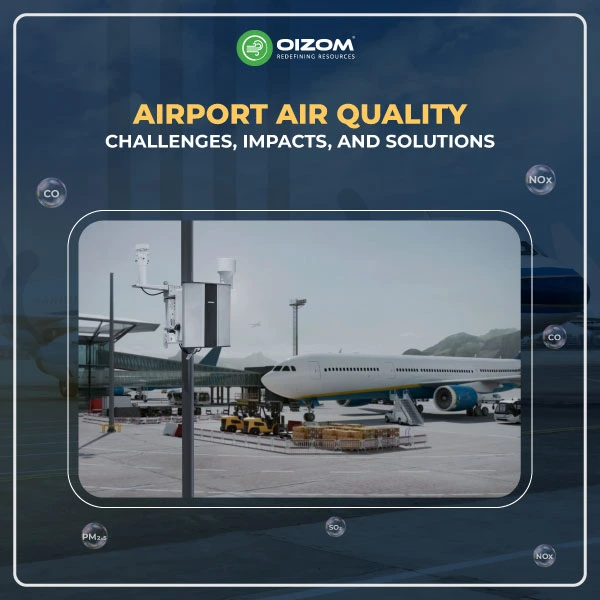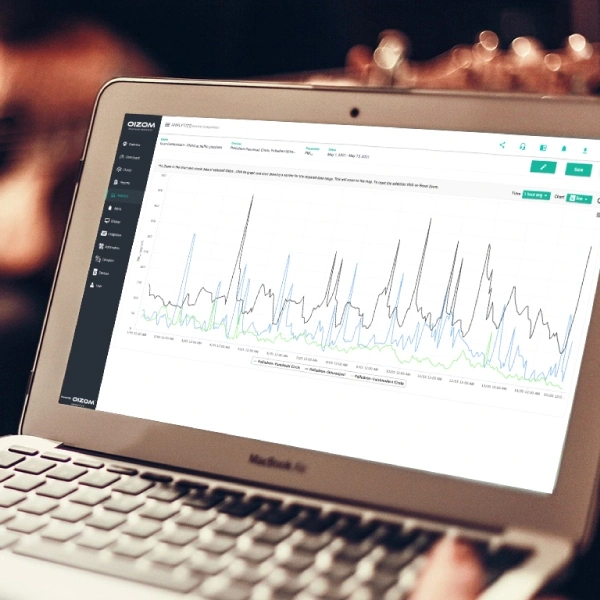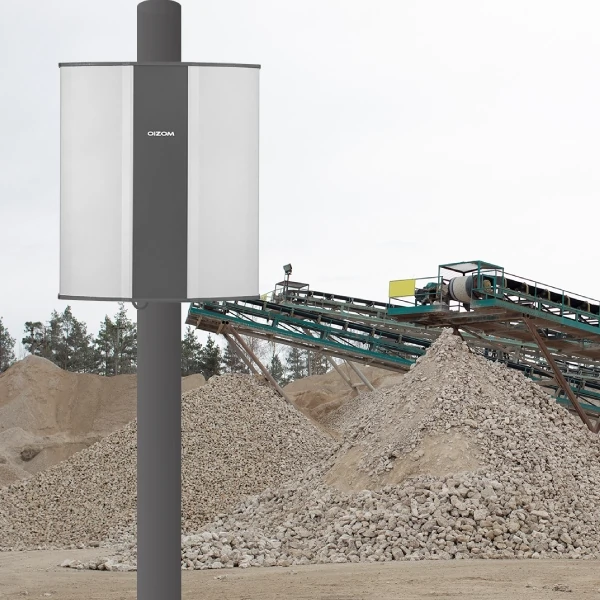As we steadily advance into the 21st century, the shadow of environmental concerns looms larger over our collective consciousness. The rapid expansion of urbanised landscapes and industrial corridors has brought into sharp focus the critical state of the environment.
As we grapple with these paradigm shifts, the quality of the air we breathe has emerged as a significant determinant of human health and environmental integrity. This is where the role of air quality sensors, standing at the nexus of environmental science and technology, assumes pivotal importance. These devices act as our frontline defence, helping monitor, interpret and abate the crisis in our atmospheric realm.
Importance of Air Quality Monitoring
Air quality monitoring is akin to the vital signs monitoring performed in healthcare. It gives us a clear, real-time picture of the health of the air around us.
According to the World Health Organization (WHO), air quality plays an instrumental role in human health, with an estimated 4.2 million deaths each year due to exposure to outdoor air pollution.
Against this backdrop, the role of air quality sensors can’t be overstated. These devices provide real-time metrics about a myriad of pollutants, serving as a crucial data source for governments, scientists, and common people alike.
They enable us to take proactive steps, be it enacting policies, implementing scientific solutions or making informed personal choices, towards improving air quality.
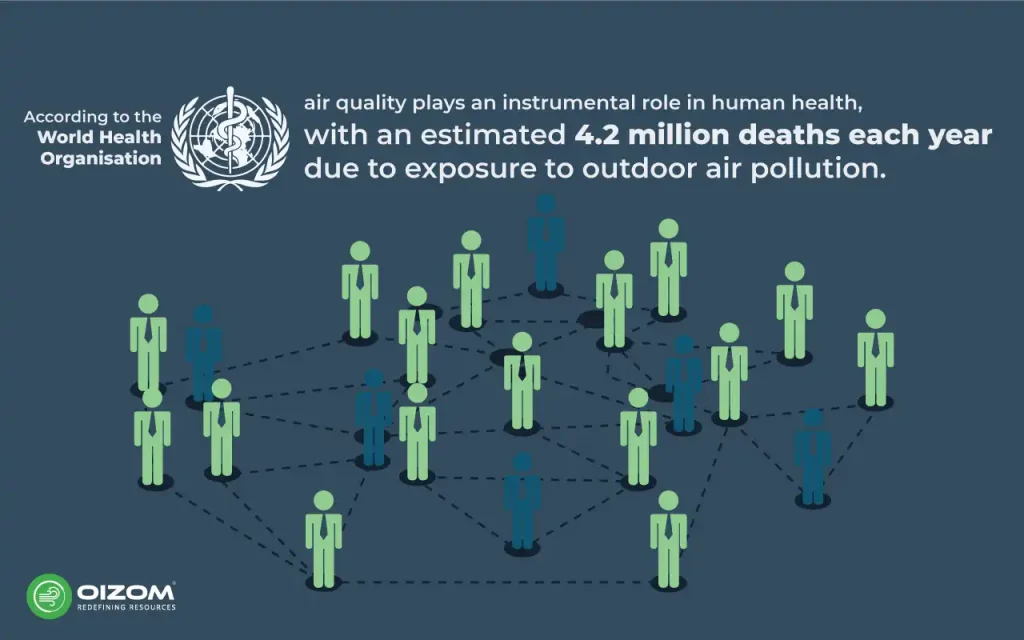
Role of Air Quality Sensors
Consider air quality sensors as the sentinels of our atmosphere. These compact yet robust devices continually monitor the concentration of different pollutants in the air, whether indoors or outdoors.
The data generated by these sensors go a long way in enforcing environmental regulations, ensuring compliance with prescribed safety standards and, ultimately, safeguarding public health.
Industrial entities, commercial establishments, residential complexes, and governmental organizations alike rely extensively on these sensors to maintain a wholesome air quality index.
Basics of Air Quality Sensors
Air quality sensors are technological marvels designed to identify and quantify specific air pollutants. They form the backbone of any systematic approach towards monitoring air quality.
Their primary function is to constantly monitor the concentration of pollutants, assess how effective our pollution control measures are, and ensure compliance with international air quality standards.
Types of Pollutants Measured
These sensors are crafted to monitor a broad spectrum of pollutants, such as various particulate matter, carbon monoxide (CO), nitrogen dioxide (NO2), sulphur dioxide (SO2), ozone (O3), and volatile organic compounds (VOCs). Their purview is not just limited to these pollutants.
The more advanced ones among these sensors can also assess meteorological parameters like temperature, humidity, and atmospheric pressure, providing us with a more comprehensive understanding of the state of our air.
With Oizom’s air quality monitors, one can monitor various pollutants including PM1, PM2.5, PM10, PM100, Carbon Monoxide (CO), Carbon Dioxide (CO2), Sulfur Dioxide (SO2), Nitrogen Dioxide (NO2), Nitrogen Oxide (NO), Ozone (O3), Hydrogen Sulfide (H2S), Ambient Noise, Ambient Light and UV Radiation, Temperature, Humidity, and Barometric Parameters.
Additionally, their weather monitoring devices include wind speed, wind direction, rainfall, road visibility, pressure, flood monitoring, and road surface condition monitoring.
Common Components of Air Quality Sensors
Broadly, an air quality sensor is made up of a sensing element, a processor, a power supply, data storage, and a communication module. As the term suggests, the sensing element is the critical component of the sensor that comes in direct contact with the pollutant. It produces a signal that corresponds to the concentration of the pollutant.
This signal is then converted into a more accessible and understandable format by the processor. The communication module plays the part of a messenger, transmitting this data to the user or a data collection platform.
Sensor Technologies
Knowing different sensor technologies is important to select an ideal air quality monitor that cover all the parameters you want to monitor.
Particulate Matter (PM) Sensors
Particulate matter sensors are fascinating devices that utilise the principle of light scattering. When these sensors direct a light source onto particles that are suspended in air, the light scatters. By measuring the degree of scattering and the count of particles, the sensors can accurately determine the concentration of particulate matter.
Gas Sensors
Gas sensors come equipped with diverse technologies such as electrochemical sensing, semiconductor-based sensing, or catalytic combustion. Electrochemical sensors generate an electrical signal in proportion to the gas concentration. On the other hand, semiconductor sensors modify their resistance in response to varying gas concentrations, and catalytic sensors combust the gas and measure the heat that results from it.
Volatile Organic Compounds (VOC) Sensors
VOC sensors predominantly use the photoionisation detection (PID) method. A current is generated when VOCs are ionised by ultraviolet (UV) light. The magnitude of this current mirrors the concentration of VOCs present.
Formaldehyde Sensors
Formaldehyde sensors conventionally use electrochemical detection as their guiding principle. A chemical reaction occurs that engenders a current in direct proportion to the formaldehyde concentration.
Acid Vapor Sensors
Acid vapour sensors employ various techniques, including absorption spectroscopy, electrochemical detection, or colourimetric tubes. The chosen method depends on the specific requirements of the monitoring scenario.
Sensor Calibration and Accuracy
Importance of Calibration
Calibration of air quality sensors is critical to ensuring accurate, reliable, and consistent measurements of air pollutants. Without proper calibration, sensors can provide misleading or incorrect data, leading to potential health risks, regulatory compliance issues, and challenges in environmental protection.
Below are the primary reasons why the calibration of air quality sensors is essential:
- Accuracy of Measurements: Calibration ensures that the sensor’s readings align with established standards. This alignment helps in detecting and measuring pollutants such as carbon monoxide, sulfur dioxide, nitrogen dioxide, ozone, and particulate matter accurately, providing a true reflection of the air quality.
- Compliance with Regulations: Many governments and regulatory bodies have specific guidelines for air quality monitoring. Regular calibration ensures that the sensors meet these standards, which is essential for legal compliance and for taking the necessary steps to protect public health.
- Health and Safety Considerations: Incorrect air quality measurements can lead to underestimation of pollution levels, potentially exposing people to harmful concentrations of pollutants. Proper calibration helps provide accurate information to guide actions for protecting public health.
- Environmental Impact Analysis: Accurate data is crucial for environmental assessment and management. Uncalibrated sensors might lead to incorrect conclusions about pollution sources and levels, hindering efforts to mitigate negative environmental impacts.
- Economic Considerations: Improperly calibrated sensors can lead to incorrect decisions that might result in unnecessary spending on air quality control measures. Conversely, ignoring a real problem due to incorrect readings could lead to larger, more expensive problems in the future.
- Enhancing Sensor Longevity: Regular calibration can also detect issues with the sensors themselves, such as wear and tear, drift, or other factors that might affect performance. Addressing these issues promptly can enhance the lifespan and efficiency of the sensors.
- Data Credibility: For researchers, policymakers, and industries, having credible data is essential for informed decision-making. Calibration instils confidence in the data, ensuring that the decisions taken based on the readings are sound and justifiable.
- Community Trust: Public trust in air quality reporting can be eroded if frequent discrepancies between reported values and actual conditions exist. Calibration helps maintain the integrity and community trust in air quality monitoring and reporting
- Global Standardization: As air quality is a global concern, calibrated sensors enable standardised measurements across different regions and countries. This standardisation facilitates international collaboration and comparability in tackling air pollution challenges.
Calibration of Air Quality Sensors
Air quality monitoring is a complex task that requires precise and consistent measurement. Ensuring the accuracy and reliability of sensor data is critical to making informed decisions on air pollution control measures. Calibration plays a vital role in maintaining the integrity of the measurements. Below are the details of the calibration methods and associated procedures:
Types of Calibration
- Factory Calibration: Sensor manufacturers accomplish this with zero-concentration air and calibration gases. It ensures that the sensor performance is according to the specifications provided. Additionally, it is a primary step in the sensitivity analysis of individual sensors.
- Laboratory Calibration: A clean and controlled environment is necessary for efficient calibration output. Gas cylinders with known parameters within recommended values should be available. To ensure correct results, nearby sources of ambient contamination need to be identified and eliminated. Furthermore, multiple readings help determine the consistency of sensor operation.
- Zero Calibration is a primary step in establishing a baseline error for sensor performance. The sensors are further exposed to zero/negligible target gas concentration. In addition to that, drifts and biases are analysed through deviations in the output.
- Span Calibration includes the input of a target gas with a known concentration. The known input values help in quantifying the drifts in the sensor readings. The gas cylinders used are in accordance with the National Institute of Standards and Technology (NIST). Additionally, this ensures complete control of the values of the input concentration of the target gas.
- Collocation Calibration: Regional interferences in sensor readings tend to create significant drifts in the data. These regional signals arise from local meteorological conditions, including temperature and humidity. However, such conditions do not affect every sensor. Colocation/ spot calibration eliminates any possible deviations from the output data. A low-cost sensor-based device is operated with a reference-grade monitor for 5-6 days at the installation site.
Calibration Methods and Procedures
Calibration procedures usually encompass the sensor being exposed to a known concentration of the pollutant, followed by an adjustment of the sensor’s output to mirror this known value. Regular calibration, coupled with proper maintenance, helps to counteract any drift in sensor readings over time, ensuring consistent performance.
Ensuring Accuracy and Reliability of Sensor Data
Accuracy in air quality measurements is multifaceted, affected by various factors such as environmental conditions, sensor placement, and the pollutants being measured. The commitment to regular calibration, preventive maintenance, and the application of correct data analysis methods forms the foundation of dependable and precise sensor data.
Data Collection and Analysis
Air quality sensors typically send data over a wireless network to a cloud-based platform, which is stored for further analysis. Various statistical and modelling techniques can be employed to dissect and interpret this amassed data. Such detailed analysis facilitates the assessment of air quality trends, identifying pollution hotspots, and evaluating the success of pollution control measures.
By adhering to these principles and practices, authorities and researchers can harness the full potential of air quality sensors, providing accurate and actionable insights that drive responsible environmental stewardship.
Applications of Air Quality Sensors
Environmental Monitoring
Air quality sensors play a pivotal role in environmental monitoring, assisting in tracking pollution levels and identifying trends over time. They provide crucial data that inform policy-making and public health decisions.
Indoor Air Quality Monitoring
Indoor air quality sensors are increasingly finding their place in homes, schools, and workplaces to ensure a healthy indoor environment. Monitoring parameters like CO2, VOCs, PM2.5, and humidity facilitates improved ventilation strategies and minimises exposure to harmful pollutants.
Smart City Initiatives
Smart city projects across the globe are harnessing the power of air quality sensors to create real-time air quality networks. These networks offer citizens accurate and timely information about the quality of the air around them, enabling them to make healthier lifestyle choices.
Industrial and Occupational Safety
Air quality sensors find extensive applications in industries to ensure compliance with occupational safety and health standards. They detect harmful pollutants and ensure that the air quality within industrial premises stays within permissible limits.
Smart Campus
Air quality sensors are being deployed across educational campuses to create a healthy learning environment. Monitoring air quality ensures the well-being of students and staff, promotes better concentration, and may reduce illnesses related to poor air quality.
Mines and Quarries
In the mining and quarrying industries, exposure to dust, gases, and other pollutants can pose serious health risks to workers. Air quality sensors help in monitoring and controlling these pollutants, ensuring a safer workplace and compliance with health regulations.
Construction
Construction sites are known for dust and other airborne particles that can be harmful. Air quality sensors monitor these pollutants and can trigger actions like watering down the site to reduce dust or adjusting work schedules to protect workers’ health.
Waste Water Treatment
Air quality sensors in wastewater treatment plants monitor gases such as methane and hydrogen sulfide, which can be dangerous to workers and the surrounding community. These sensors help in the timely detection and control of these gases.
Schools
Similar to smart campuses, schools are increasingly adopting air quality sensors to provide a healthy environment for students and teachers. These sensors can lead to proactive measures to improve air quality, such as increased ventilation or filtration.
Airport
Airports are hubs of various air pollutants from planes, vehicles, and other machinery. Air quality sensors at airports help monitor these pollutants, aiding in developing strategies to minimize exposure for travelers and staff.
Roadside Traffic
Monitoring air quality near major roads and intersections helps cities understand vehicular pollution’s impact. Data from these sensors can influence urban planning decisions, such as where to plant trees or install barriers to shield residential areas from pollutants.
Industrial Emission
Regulation of industrial emissions is vital for environmental protection. Air quality sensors help in monitoring and controlling emissions from various industries, ensuring compliance with environmental regulations and minimising the impact on the local ecosystem.
Industrial Hygiene
Industrial hygiene focuses on the prevention of occupational diseases and injuries. Air quality sensors in this context are used to monitor the exposure levels to various chemicals and dust continuously, thus assisting in keeping the workplace safe.
Tunnels and Multi-level Parking
Air quality in confined spaces like tunnels and multi-level parking garages can deteriorate quickly due to vehicle emissions. Sensors in these locations monitor air quality and can activate ventilation systems to keep the air fresh and safe for drivers and pedestrians.
Conclusion
Air quality sensors act as a beacon of hope in an era where air pollution poses a significant threat to both human health and environmental stability. Companies like Oizom are at the forefront of this environmental revolution. Their air quality monitors, which provide accurate, real-time air quality data, are invaluable in our journey towards a healthier, more sustainable future.
From advanced sensor technology to proper PM2.5 sensor installation techniques, every step matters in ensuring reliable data and long-term performance. Take the leap towards data-driven decisions with Oizom’s air quality monitors.

